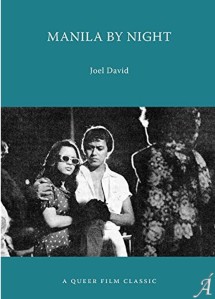Censorship and Other Compromises
A curious aspect in the local experience of film censorship is the fact that, in the rare instance of libertarian restraint on the part of government, the eventual clamor by the influential members of society has been for more censorship, not less.[1] This contrasts dramatically with historical developments in other media of expression, in which at least one side – the so-called progressive segment of society – welcomes the granting of freedom and strategizes whenever possible for the institutionalization of newly acquired benefits. The differences can be perceived from concrete examples of recent origin: where the Experimental Cinema of the Philippines exists only in ignominy, castigated toward the end by the very same concerned artists who helped set it up, the “alternative” elements in print and broadcasting today dominate their respective media, rising from the status of glamorized underdogs by waging and then winning their wars on the circulation and advertising fronts.

Film & theater activist director/actor Behn Cervantes (1938-2013) in an anti-censorship rally.
11011The salient distinction arises from the fact that film, more than any other form of mass media, is an industrial product, notwithstanding the assertions of a number of enlightened filmmakers. For indeed, who is the filmmaker? The director (as pronounced in occasionally mystifying foreign critical terms) is generally regarded in artist circles as the central intelligence, but she usually merely interprets an earlier work, that of the scriptwriter – who in turn may have derived more than just ideas from another source, but for simplification’s sake let us stop here. The writer’s ideas would be almost always embodied in, if not argued by, a character or group of characters, which in industrial parlance translates to actors. The actors, unlike the director, do more than interpret: they provide the motive for the movie to advance to production by assuring, through their box-office draws, returns on investment. And where would a movie project be without investment in the first place? If producers were concerned more with credits than with profits, one wonders if the politics of auteurism (a movement which ascribed final credit for a film to its director) would ever have prospered. The authentic auteur – a producer-director-writer-performer, rarely found even in alternative formats – is the exception who proves the rule.
11011This industrial nature does not prevail as strongly in print, broadcasting, or theater, which are generally conceded to be writers’ domains. Where a singular source of responsibility can be pinpointed, it becomes easier to enforce ideals from within the community of artists. Hence the tendency among writers (in print, especially) toward censoriousness – a creature totally different from the monstrosity of censorship – toward one another, particularly the ones perceived as abusive. Filmmakers, or more accurately the makers of film, on the other hand, tend to exculpate themselves by pointing to one another, or if it becomes unprofitable or too late to do so, then perversely they turn on the hapless moviegoing masses on whom they rely to patronize their products.
11011The issue in basic law should therefore be modified, more so at present when that same law is being redrafted, to whether industrial expressions should be given the same status as individual expressions when it comes to the enjoyment of constitutional rights. Of prime importance here is the consideration that industrial output presumes a profit motive and results from several possible compromises, responsibility residing in a collective of individuals that breaks up as soon as the industrial process is completed (i.e., after the money has poured in). The previous regime’s schizoid approach in exercising film censorship and at the same time exempting an official entity on the one hand, and endorsing film classification and exempting taxation on the basis of quality on the other hand, may in retrospect seem too scatterbrained to be effective. But waste not the lessons of history, as the sage said, or else be doomed to repeat it. Already becoming evident is the imposition of a parochial (Catholic aristocratic big-business) stringency in film censorship, being challenged by or challenging a resort to alternative circuits (countryside moviehouses, replacing the Manila Film Center) by film practitioners desperate for easy profits.
11011If anything, Marcos-era government control over the film industry indicated that a reliance on extremes – total censorship and total freedom at the same time – promoted excesses on both sides. Of more instructive value are the well-received, though not entirely officialized, innovations in the toleration of film classification and the granting of incentives to quality output. And herein may lie an even more profound lesson for dealing with larger sociopolitical issues: the solution to a compromise-laden problem (represented in our discussion by film as an industrial product) may be found, not in the extremes applied to uncompromised challenges (censorship or exemption from it as in the case for written works), but in the best available compromise as well (classification and incentives for quality in film). Now if our national problems could be just as easily simplified….
[First published September 15 1986, in New Day]
Note
[1] In a subsequent study, Lynn Hunt pointed out that the concept of obscenity, the elimination of which is the state’s motive for exercising censorship, became part of Western legal discourse after the propagation of printing technology – see “Obscenity and the Origins of Modernity, 1500-1800,” The Invention of Pornography: Obscenity and the Origins of Modernity, 1500-1800, ed. Lynn Hunt (New York: Zone, 1996): 9-45. Prior to this way of thinking, graphic sexual descriptions, access to which was then-confined to aristocrats and church officials, was described without the need to call in state control mechanisms – e.g. erotica.
Back to top
Return to The National Pastime contents
Film students’ faces are almost always wide-eyed and expectant, understandably because of the stimulating nature of their subject matter. The few occasions they predictably go blank are when I’d drop a French-derived theoretical terminology, or when I make my standard assertion that film criticism, as it’s been known elsewhere, doesn’t really exist in the country. Why so? the questions begin. The entertainment sections of dailies and magazines feature comments on current and forthcoming titles – maybe not regularly but often enough to convince even disinterested observers of their presence.
11011The confusion over the differences between the reviewing and the criticism of films had been taken up and resolved in international circles some decades back, but for certain cultural and circumstantial reasons, we find ourselves with the impression that film criticism goes on as is where is, and suffices for purposes of appreciation of the medium. Said reasons operate as a complex, but I guess one could make the effort of disentangling them for easier scrutiny. Taking the typical nationalist reflex of finding others to blame first, one could come up with enough of an argument with which to exculpate fellow practitioners. The state of medium-specific film theory, which is in a proper sense the purest form of film criticism, arrived at a dead end a long time ago with the practical perfection of the medium, and to ensure that formal film studies would still benefit from the momentum of dynamic film theorizing, the academicians took over.
11011Now certain intensively intellectual disciplines, mathematics and philosophy for instance, benefit greatly from what has come to be known as ivory-tower activity. But film happened to be fun to study yet correspondent with real life at the same time: it’s an art form with a sociopsychological dimension, true, but it also has technological, industrial, and political aspects no less essential to its development. So when the era of real interaction between the theory and practice of film reached its maximum, with the admirable collaboration of critics and filmmakers (and at least one instance of a combinative genius in Sergei Eisenstein), filmmakers branched off into collecting their moral and financial dues for their years of risky experimentation, while critics sought refuge in churning out propositions for the medium that couldn’t find productive applications beyond the self-promotion of their proponents.
11011The more practicable methodologies include auteurism, structuralism (currently trying to make a comeback under Marxist guises), semiotics, and so-called Third World film criticism, which is actually a rehash of phenomenological propositions. I label these “practicable” because they could (and did) prove to be useful for film classification and a certain though often irrelevant type of evaluation; but heaven knows how many more filmmakers steeped in these schools of thought will be venturing forth with at first the conceit of holding the key to the next phase of the evolution of cinema and finally winding up with a body of pretentious, at best inoffensive, but never really vital, work.
11011How then does one determine if a theory deserves a status of serious consideration not just in film study but in practice as well? Simply put (though difficult to propagate), when it can be formulated as a proposition for a creative strategy, and when the application in turn yields insights into the original formulation and suggests further directions in speculation within and without the theory’s framework. Hence Eisenstein’s reflections on montage resulted in his Battleship Potemkin, and in the other direction Jean Renoir’s Rules of the Game aided André Bazin in spelling out the whys and wherefores of deep focus.
11011On the other hand, the Cahiers du Cinéma school of auteurism (ironically associated with Bazin) resulted in a movement of wonderful personal films from the proponents themselves – no big deal but then again this reflects more the sincerity of the New-Wave critics-turned-directors rather than the soundness of their fury; in their wake, all the way to the present, came a glut of aspiring filmmakers whose notions of personal import derived from imposing on their audience a “mark” of some sort or other – a prop here, a stylistic device there – in the hope that the accumulation of these little quirks would amount to something more than indulgence, which of course rarely became the case. You can imagine how much more impossible it becomes for a pro-structuralist or -semiologist to come up with the Next Leap Forward in film theory, just by marveling at the inordinate complexities and near-obscurity of the basic texts.
11011And now Filipino film scholars have all this to contend with – a list of readings sounding terribly erudite but rarely with the disclaimers of their failure in practice; this plus the fact that the local industry has hardly progressed beyond the basic montage-vs.-mise en scène debate in cinema, and most probably never will, because of the characteristics of technology and market. And we haven’t even begun to consider the dynamics of writing on film in the Philippines.[1]
State of Local Criticism
Much as we love to deplore the current state of poverty in film criticism, the Philippine situation isn’t really all that unique. Of course advertisers resent it when the pages they run their layouts in publish negative notices of their products. Of course readers burdened with elementary-school grammatical capabilities (observed for local newspaper writing) wouldn’t bother to read polysyllabic and syntactically playful analyses of what in the first place they regard as entertainment. Of course editors need to protect their advertisers and please their readers. And of course film writers will be lucky to find a way out, if not through, all this, dealing along the way with various impositions and influences peculiar to their status as members of intelligentsia.
11011Most people hereabouts seem to agree that film commentary is largely a matter of endorsing a worthy product and repudiating a worthless one. In fact the local reviewers’ group, the Manunuri ng Pelikulang Pilipino, points up this consumerist thrust in its organizational documents, and then some: in cases where film elements attain similar levels of competence, the members are expected to prefer titles with more “social” orientations.[2] As to how this has reflected on the group’s current claim to significance – the Urian awards for achievements in film – a highly specific case inquiry has to be done first.
11011The inadequacies of film commentary for consumerist purposes reveal themselves through time and practice, and the fact that the Manunuris still have to own up to this reveals how much of their time they have wasted and their practice neglected. The industry turns out only so many films a year, each intended to recoup investments from an audience of the impossible maximum of sixty million, the newborn, handicapped, and aged included. To tell readers who care to pay attention that a certain product isn’t worth patronizing is tantamount to telling off an entire system that wouldn’t have any other way of recovering losses and therefore alerts itself to offensive moves from any front, regardless of the purity of motivations.
11011Then we come around to the vicious cycle where most moviegoers couldn’t care less about aesthetics to begin with, only with entertainment values, and so the film reactor committed to working within a journalistic grind gets reduced to selectively evaluating films (only the praiseworthy ones), or compromising her criteria to conform to the less antagonistic aspects of film appreciation. This presumes that the film critic-aspirant possesses the minimum of an academically acceptable sensibility to begin with, but in practice the entire setup is so pervasive and aggravating that beginners in the craft of writing on film rarely even acquire insights on possible areas of exploration and development.
11011Hence the sorry state of film criticism extends to not just the circumstances surrounding the practitioners, but the condition of the practitioners themselves. One defense, as seen in the Manunuri stipulation of criteria, lies in the distortion of consumerist prerogatives to the point where film is perceived as something that’s intended to further the welfare of its patrons: not only is film comment supposed to distinguish the products to be patronized from those to be shunned, the highest form of recognition is also reserved for the title that keeps the best interests of society in mind, as if the obverse (society keeping in mind the best interests of its art forms) could be placed in subordination. Another and more insidious corollary from the ranks of the self-proclaimed critics, at least the organized ones, is based on the assertion that the filmmakers themselves don’t come up with discussible films often enough anyway; this attitude has served to justify the perpetuation of the Urian awards despite the well-known divisive effects it promotes in the community of film artists. The Manunuri’s arrogance in this regard has attained a height of sorts with the group’s cancellation of this year’s ceremonies because of the supposed paucity of instances of quality in film output during the previous year.
11011Lost in this enumeration of excuses is the purpose itself of film criticism: to provide for the development of film through refinements, if not advancements, in film theory and aesthetics. In practical purposes, the biggest losers aren’t really the financiers, who have found ways and means of either buying out or arm-twisting disobliging commentators; nor are the so-called critics either, given the facility and the mechanisms at their disposal to present rationalizations for accusations against their performances. It’s the film practitioners who in the final analysis are left without any means of critical support, eternally in peril at both ends of filmmaking activity: from the producers on the one hand and prospective film commentators on the other. If any substantial discourse about film has to be done, it can only be accomplished largely from within the ranks of the filmmakers – and such has already been the case, in the instances of individual artists so far. The body of work of the likes of Ishmael Bernal and Ricardo Lee, to name two, reveals a clear progression in working out approaches to the medium; a competent, eager, but naïve film researcher, however, might manage to search high and low for parallel discussions in print regarding the directions these individuals have taken and might take, but will never come up with an accurate articulation of their concerns beyond what they or the evidence of their works will be able to state.
Reviewing vs. Criticism
A major instance of inadequacy that still has to be pointed out was how, in the case of Ishmael Bernal, local film critics never really managed to pinpoint, even within a wide latitude of accuracy, the director’s actual intentions for the use of the medium in his 1976 film Nunal sa Tubig. The material answer arrived four years later, too powerful for anyone to ignore – in the masterpiece that was Manila by Night. Issues on Nunal sa Tubig then centered on the validity of adopting devices perceived as Western to treat what was alleged to be non-Western material. The debate may have carried some weight in politicized discussions, but hardly merited attention within a strictly pro-artist approach, wherein devices necessarily possess neutral significance and are intended to be measured by how effectively they lend themselves to dramatic exploitation.
11011In hindsight, however, this deficiency in analysis ironically assumes a positive import, stemming from the fact that a controversy ever occurred at all, even if only regarding a peripheral aspect of film. Today the attitude among the more serious film commentators seems to presume that the medium deserves no further figuring out apart from what can already be acquired from available references – a viewpoint antithetical to what a practitioner like Bernal, for all his professed indifference on this score, is undeniably occupied with, on the basis of his continuing output.
11011Most urgently a call needs to be sounded out for an awareness of the relative worth of film criticism vis-à-vis reviewing.[3] The formation of the Manunuri can be credited with having elevated the status of reviewing over public relations work, but then the next stage has been long overdue. Commentaries on film need not always conform to the journalistic expediencies of outscooping competitors, providing the latest on every film output that comes along, and taking stock of space and market limitations at the expense of ideational progress. It should go without saying that such an approach will still have its place in our cultural setup, just as film publicity still finds excuses for being; but criticism of film – essential, learned, and forward-looking – cannot be delayed just because current conditions don’t seem to warrant it: no one expected film reviewing to gain public acknowledgment either, until the Manunuri came along.
11011By way of starting out, it would help to reiterate the differences between film reviewing and criticism by drawing from the more advanced discipline of literature: reviewing would involve the articulation of the writer’s reactions to a particular work or number of works, with a popular aim in mind such as endorsing or condemning the work, encouraging or disparaging the filmmaker, or even merely expressing a personal opinion; criticism, on the other hand, requires a more advanced treatment, with the objective of discussing, from a philosophical perspective, problems pertaining to the potentials or limitations of the medium, whether as art form or industry. A particular work or number of works may be employed as springboard in criticism, although a hypothetical question may serve just as well. For where in film reviewing validity is dependent upon the work under discussion, criticism does not require comparison with any title mentioned in the course of discussion to determine the strength of the points being raised: the primary test lies in the logical acceptability of the relationships established among the ideas in question, as well as the applicability of the said ideas in basic film practice.
11011I’d also like to point out the way in which film criticism will eventually get the state of local film commentary out of the rut it finds itself in at the moment. From the critic’s point of view, any movie is worth criticizing because of the industrial nature of filmmaking; no film can ever be finished without its having raised an issue relevant to modern existence, whether aesthetic, technical, moral, social, financial, political, psychological, etc. But then any piece of criticism demands further discussion, and so any film being subjected to criticism will, or at least should, always be worth watching. The challenge for the essentially subjective individual is to arrive as closely as possible to this objective analysis. A simple or simplistic film, a failure in terms of innovation in any way, will be easier to evaluate than a more complex one, which could go on providing insights even decades after its initial presentation; with criticism firmly in place, film commentators will be able to reserve for themselves the prerogative of subjecting their initial perceptions to revaluations.
[First published January-March 1989 in National Midweek]
Notes
[1] The situation described from this paragraph onward obtained before the emergence of so-called new media, i.e. the internet era. For a more recent explication of the concerns of this essay, see “Pinoy Film Criticism: A Lover’s Polemic” in Manila Review 4 (February 2014): 49-32.
[2] This elaboration of a presumably progressive adjustment of New Criticism’s form-vs.-content criteria for significance may be found in all texts by the organization that describe its annual movie awards – mainly brochures and the decadal “Urian” anthologies (the first, for ex., was titled The Urian Anthology 1970-1979, with the rest adopting this pattern).
[3] Most of the points raised here echo the writings, directly or otherwise, on the differences between reviewing and criticism, as elucidated in the output of practitioners during the so-called “Golden Age of Movie Criticism: The 1950s through the ’70s” in American Movie Critics: An Anthology from the Silents Until Now, ed. Phillip Lopate (New York: Library of America, 2006): 207-504.













 ORCID ID
ORCID ID 